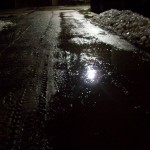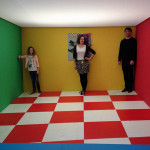No, this is not a picture made on one of Jupiters moons. This is taken…
Tactile eyes?
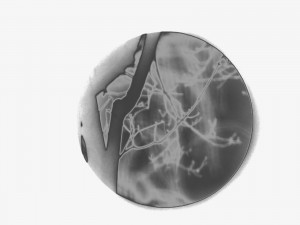 Had the MaHKU initial review this week, very encourging feedback, mostly in the ‘good’ category. Points to consider:
Had the MaHKU initial review this week, very encourging feedback, mostly in the ‘good’ category. Points to consider:
– am still hovering around my subject, need to land (on) it;
– could use my former experience more;
– need to find a way to visualise my work.
The last point was also mentioned at the Tractie review friday last, see blog. Set me thinking about how to make the visual part of my equation. I don’t think the pictures of people feeling vibrations when participating in experiment no. 003 are very illuminating as to the experience they are going through. Can’t think of any way to use visuals to represent the work on ‘sense of touch’ that I have been doing. So I think I need to include the visual in the work. Consequently, the last few days I’ve been ruminating on the visual, the haptic and how these two could work together.
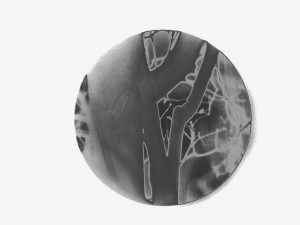 Then an article I read a couple of weeks ago came back to me, source is here, where images detected by a camera are translated into a pattern of electric pulses that trigger touch receptors on the tongue. This gives blind people an idea of seeing, as the brain readily adapts to this strange-sounding type of input. Blind people perceive the stimulation as shapes and features in space. The scientists working on this experiment say that volunteers testing the prototype soon lose awareness of on-the-tongue sensations. Their tongue becomes a surrogate eye. If this can be done, my thought was that I can apply reverse engineering. Leading to the following question: What if I would use my eyes in the way I use my fingers? Can I apply the strategy of ‘touching’ to ‘seeing’? Haptic vision? Tactile eye?
Then an article I read a couple of weeks ago came back to me, source is here, where images detected by a camera are translated into a pattern of electric pulses that trigger touch receptors on the tongue. This gives blind people an idea of seeing, as the brain readily adapts to this strange-sounding type of input. Blind people perceive the stimulation as shapes and features in space. The scientists working on this experiment say that volunteers testing the prototype soon lose awareness of on-the-tongue sensations. Their tongue becomes a surrogate eye. If this can be done, my thought was that I can apply reverse engineering. Leading to the following question: What if I would use my eyes in the way I use my fingers? Can I apply the strategy of ‘touching’ to ‘seeing’? Haptic vision? Tactile eye?
I tried to envisage what it would mean to have a tactile eye. I would record surface, difference, shape, but no colour, distance, depth. Example: a ball would be constructed in my mind not as a round red shape but as a bald surface that can be 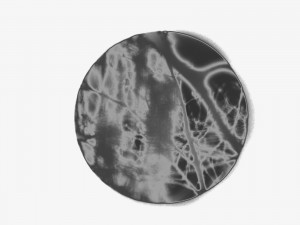 circled around. Using this strategy would mean re-learning to recognise and record objects – like we did when babies, object-permanence and all. I would read landscapes and faces like I read a book: letter by letter or word by word. So viewing a tree would be like recording a series of ‘viewprints’ (from: fingerprints).
circled around. Using this strategy would mean re-learning to recognise and record objects – like we did when babies, object-permanence and all. I would read landscapes and faces like I read a book: letter by letter or word by word. So viewing a tree would be like recording a series of ‘viewprints’ (from: fingerprints).
Now I used to be a surveyor, and pics without depth sounded very much like the world seen through a telescope. So I did a series of pictures of trees, seen through a telescope. The ‘viewprints’ came out looking like the pics in this post.
| « Microstates, macrostates, exformation | <-- previous post | next post --> | Experiment 005/2010: eye moving from point to point » |
|---|
